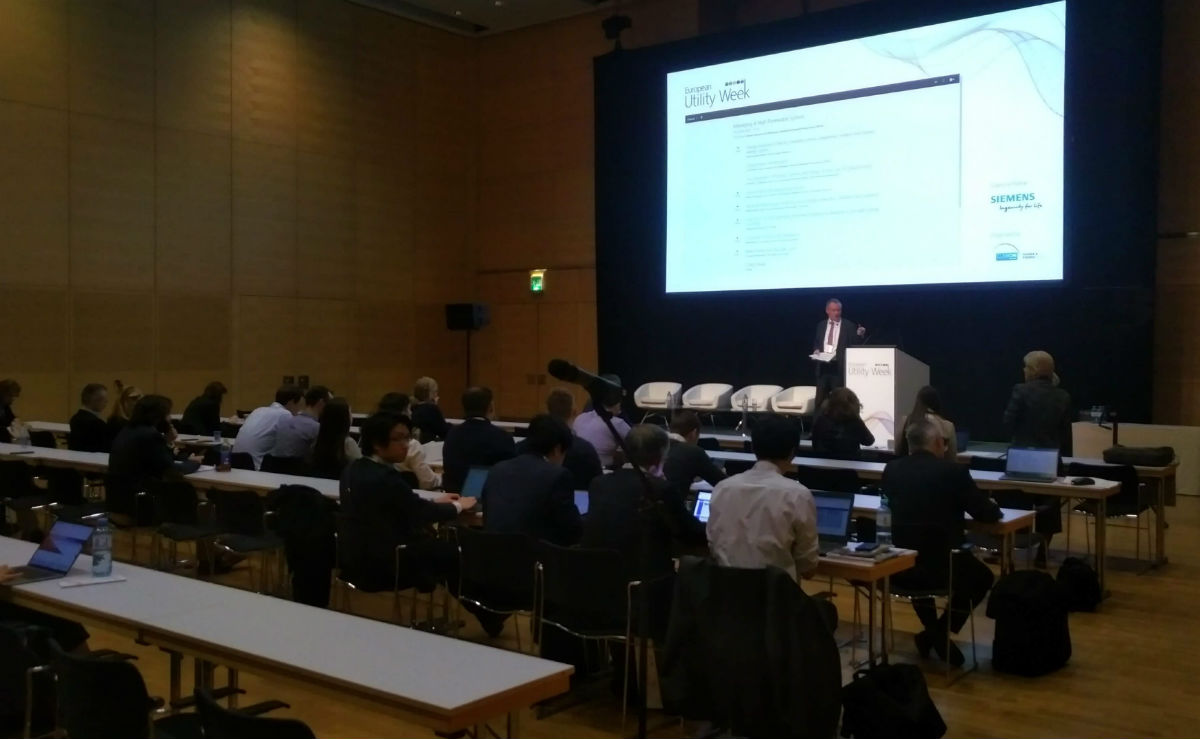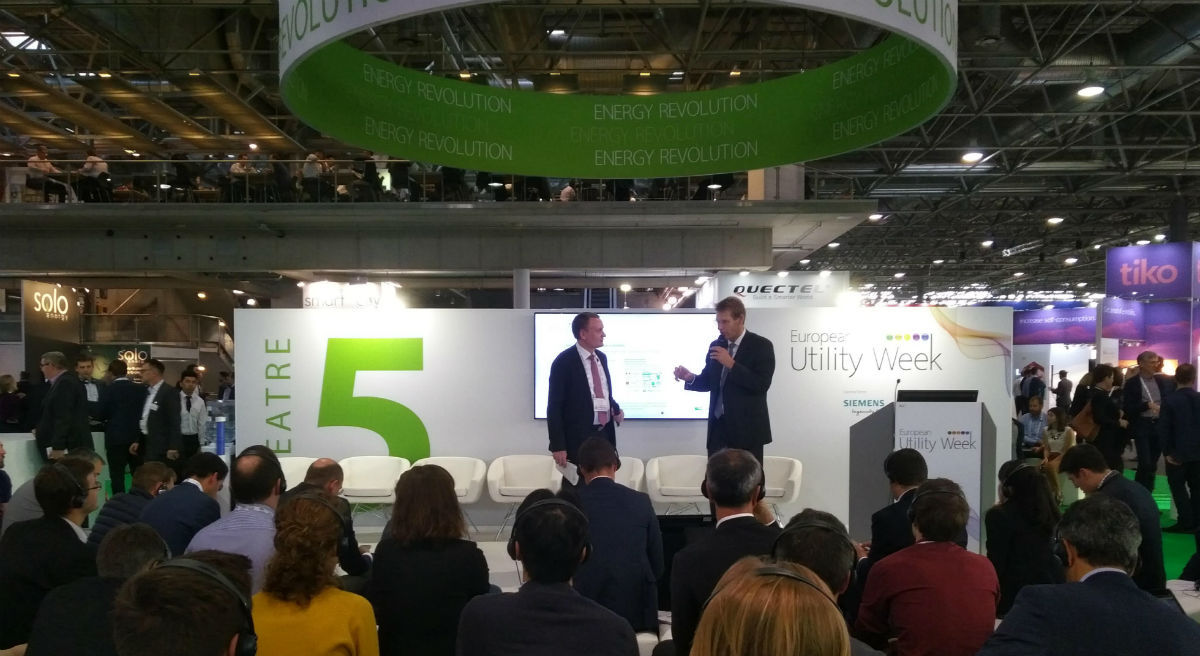
IRENA at European Utility Week 2018
IRENA co-organised two events at European Utility Week 2018, covering 'Managing A High Renewable System' and 'Electric Vehicles and Renewable Energy Powering the Transport Sector'.
6 November
Managing A High Renewable System

The European Union is accelerating its transition to a low-carbon energy system and has agreed on a renewable energy (RE) target of 32% by 2030. Analysis from the International Renewable Energy Agency (IRENA) indicates that this target is feasible to reach if the right policies frameworks are in place and it will unfold socioeconomically benefits that will outweigh the costs of the transition.
Electrification will also play a key role, contributing to both renewable energy integration and decarbonization of end-use sectors -transport, buildings and industry-. The Union of the Electricity Industry - Eurelectric states that a deep EU decarbonisation requires a 60% electrification rate by 2050, from 22% in 2015, and a share of renewable energy higher than 80% in the power sector. Variable renewable energy (VRE) technologies, particularly wind and PV, will play a central role to achieve these targets. The integration of such a high share of VRE in the European power system calls for innovative ways to plan, operate and maintain power. Other emerging innovation trends, like the decentralisation and digitalisation of the energy sector, may also enable greater flexibility and contribute to integrate in a cost-effective manner high RE shares in the power sector.
The session discussed with different key actors of the energy sector in Europe — policy makers, regulators, industry experts — the challenges and opportunities that the transformation of the European power sector brings, and strategies for a successful transition to energy systems with high RE penetration.
IRENA’s forthcoming report Innovation landscape for a renewable-powered future: Solutions to integrate variable renewables, aims to increase awareness of the emerging innovations among policymakers and guide them in what suits their country’s context in order to accelerate renewable energy deployment.
7 November
Electric Vehicles and Renewable Energy: Powering the Transport Sector Transformation

EElectric vehicles (EVs) represent a paradigm shift for both the transport and power sectors, with the potential to aid to the decarbonisation of both sectors by coupling them. Around 4 million EVs are in use worldwide. EVs are an interesting innovation from a renewable power integration perspective as, unlike other flexibility options, they are not developed to serve the power system. A key element is the coordination of EVs charging demand and supply of electricity from solar PV and wind power technologies. Smart charging of EVs will be crucial to enable renewable energy sources (RES) integration while avoiding network congestion.
Additionally, EVs could potentially reduce of costs of power infrastructure investment through the use of the vehicles as a storage resource, thus providing additional flexibility to support power system operation. For instance, EV owners could provide ancillary services by supplying the excess electricity stored in their EV batteries to their homes or simply to the electricity grid (so-called V2G).
This session explored the links between the electrification of the transport sector and the integration of high shares of renewables in power systems. It highlighted how the synergy between the two can help drive the Transport Sector Transformation. Progress and innovations in transports sector’s technologies were discussed, namely EVs, vehicle-to-grid and smart-charging, which can transform the electricity system and play a key role in the integration of variable renewable energy sources into the grid.
IRENA will launch early 2019 Smart Charging Innovation Outlook: electric vehicles and renewable energy sources integration. The study shows how smart charging and innovations at the intersection of e-mobility and renewable power can unlock flexibility in the system and decarbonize both sectors. The study analysis the outlook of smart charging modes, infrastructure, regulation and business models, while also tackling on how innovations in the e-mobility sector, such as shared economy and autonomous cars would impact the flexibility potential in the power sector.
Part 1
Part 2